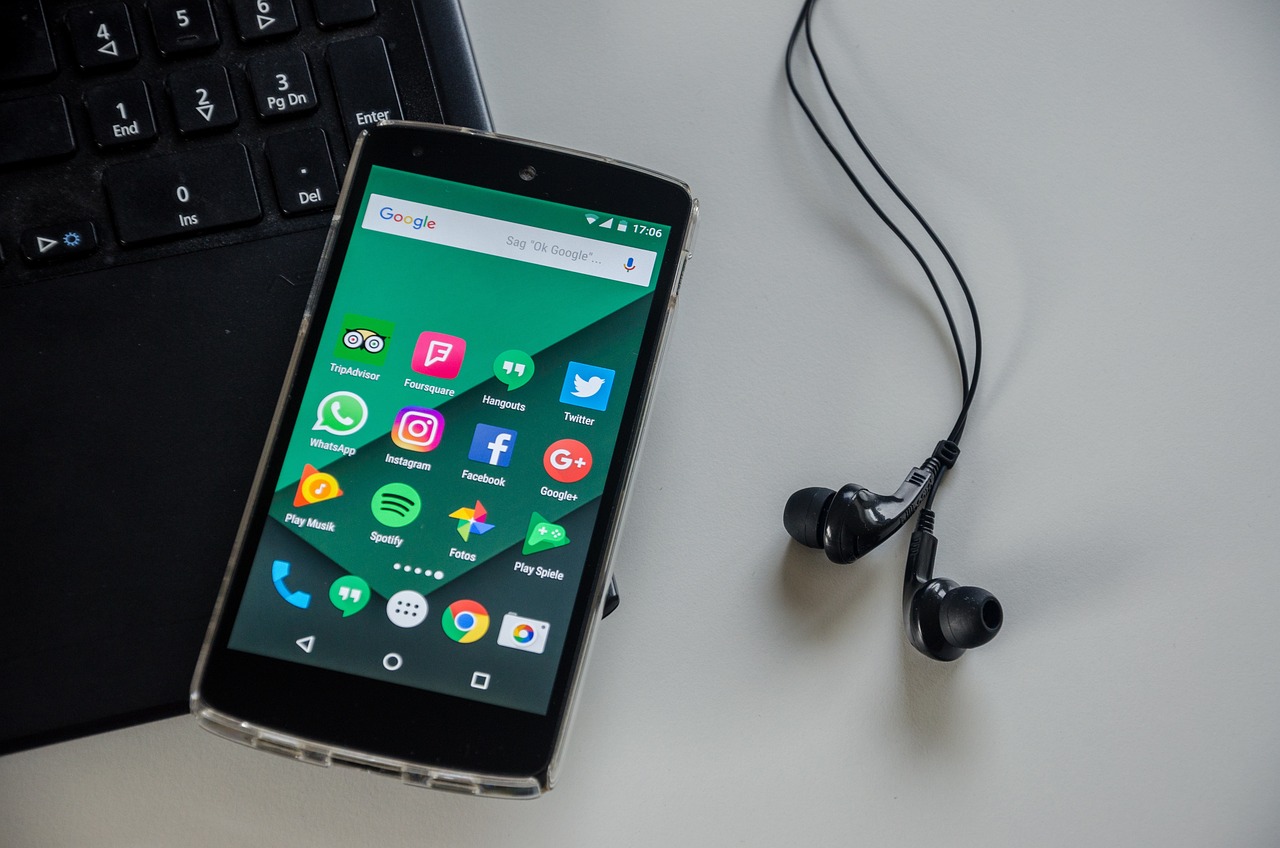How to Segregate Work and Personal Life on Social Media
In today’s digital age, social media is an integral part of our lives, serving as a bridge between our professional and personal worlds. However, the challenge lies in maintaining a healthy boundary between these two spheres. With just a few clicks, a personal post can easily blend into a professional network, leading to potential misunderstandings or privacy concerns. So, how can we effectively segregate work and personal life on social media? This article delves into practical strategies that empower you to create a distinct boundary, ensuring that both your professional integrity and personal privacy are upheld.
Recognizing the need to separate work and personal life on social media is crucial for mental well-being and professional integrity. Imagine your social media profiles as two distinct rooms in your house: one for hosting colleagues and clients, and the other for family and friends. Each room has its own vibe and purpose, and mixing them can lead to uncomfortable situations. By maintaining clear boundaries, you not only protect your personal information but also cultivate a professional image that resonates with your career aspirations. The benefits of this segregation are manifold:
- Enhanced Privacy: By keeping personal and professional accounts separate, you can control who sees your content, minimizing the risk of oversharing.
- Improved Focus: When you engage with content tailored to your professional interests, you’re less likely to be distracted by personal posts.
- Professional Growth: A well-curated professional profile can lead to networking opportunities and career advancements.
Different social media platforms serve various purposes, and understanding these differences is key to effective segregation. For instance, LinkedIn is tailored for professional networking, while platforms like Instagram and Facebook are more suited for personal interactions. Choosing the right platform can significantly impact how you present yourself online. Here’s a brief overview of popular platforms:
| Platform | Purpose |
|---|---|
| Professional networking and career development | |
| Personal connections and social interaction | |
| Visual storytelling and personal branding | |
| Real-time updates and professional discussions |
Platforms like LinkedIn are designed for professional interactions, allowing you to connect with colleagues and industry leaders. When using these sites, it’s essential to maintain a distinct professional persona. This means curating your profile to highlight your skills and accomplishments while avoiding personal anecdotes that could dilute your professional image.
Crafting a professional online presence is all about showcasing your career aspirations without blending in personal content. Think of your LinkedIn profile as your digital business card. It should be polished, concise, and focused on your professional journey. Here are a few tips to consider:
- Profile Picture: Use a professional headshot that reflects your industry standards.
- Headline: Write a compelling headline that summarizes your expertise.
- Experience: Highlight relevant experience and achievements that align with your career goals.
Networking is vital in today’s professional landscape. Engage with colleagues and industry leaders by sharing insightful articles, commenting on relevant posts, and participating in discussions. This helps establish your presence in your field while keeping your personal life distinct from your professional interactions.
On the flip side, managing personal accounts allows you to express your true self without the constraints of professionalism. It’s your space to share experiences, thoughts, and creativity. However, it’s still essential to be mindful of your audience. Consider the implications of your posts and how they might affect your professional image. After all, potential employers or clients might stumble upon your personal accounts.
Understanding and utilizing privacy settings on social media platforms is essential for safeguarding personal information. Each platform offers various privacy options, allowing you to control who sees your content. Take the time to explore these settings and adjust them to suit your needs.
Creating specific friend lists can help control who sees what content. For instance, on Facebook, you can categorize friends into groups such as “Close Friends” or “Colleagues.” This way, you can share personal updates with your family while keeping professional connections in the loop only about work-related matters.
Learn how to distinguish between public and private posts. This is crucial in ensuring that your personal life remains private while still engaging with your audience. For example, consider setting your Instagram account to private, allowing only approved followers to view your content. This way, you can share your life freely without worrying about uninvited eyes.
Developing a content strategy that aligns with your professional and personal goals is vital. Curating content that serves both aspects of your life not only helps maintain boundaries but also enriches your online presence. Think about what you want to convey through your posts—are you sharing a personal story, or are you providing professional insights?
A consistent posting schedule can help maintain boundaries. For instance, you might decide to share professional content during weekdays and save personal posts for the weekends. This structured approach allows you to engage with both spheres without feeling overwhelmed.
Sharing content that reflects your personal values while remaining appropriate for your professional image is crucial. You can achieve this balance by thoughtfully selecting what to post and ensuring it aligns with your overall brand. For example, if you’re passionate about sustainability, consider sharing articles or tips that resonate with this value, but do so in a way that’s relevant to your audience.
Q1: Why is it important to segregate work and personal life on social media?
A: Segregating work and personal life helps maintain privacy, enhances focus, and supports professional growth by allowing you to curate your online presence effectively.
Q2: How can I manage my privacy settings effectively?
A: Take time to explore the privacy settings on each platform, customize friend lists, and distinguish between public and private posts to safeguard your personal information.
Q3: What are the best platforms for professional networking?
A: LinkedIn is the go-to platform for professional networking, while Twitter can also be useful for real-time updates and discussions within your industry.

Understanding the Importance of Segregation
In today's digital age, where social media plays a pivotal role in our daily lives, the need to separate work and personal life has never been more critical. You might wonder, why is this segregation so essential? Well, think of it like a well-organized closet. When everything is in its place, you can find what you need quickly and efficiently. But when your work clothes are mixed with your casual wear, it can lead to confusion and chaos. Similarly, blending your professional and personal identities online can create unnecessary stress and complications.
Maintaining clear boundaries on social media helps protect your mental well-being. Imagine scrolling through your feed and stumbling upon a colleague's post about a work-related project while you're trying to unwind after a long day. This can disrupt your relaxation time and make it difficult to switch off from work. By keeping these worlds separate, you can enjoy your personal time without the constant reminder of work commitments.
Moreover, having distinct professional and personal profiles enhances your professional integrity. When you curate your online presence, you’re not only showcasing your skills but also establishing your brand. Employers and clients often look at social media to gauge potential hires or partners. If your personal life is mixed in with your professional persona, it could lead to misunderstandings or misinterpretations. For example, posting a party photo might not align with the serious image you wish to convey in your professional life.
Additionally, segregating your online identities can prevent potential conflicts. Consider this: if you post a strong opinion on a controversial topic on your personal account, it might inadvertently affect your professional relationships. Colleagues or clients may view you differently based on your personal posts, which could lead to awkward situations or even damage your professional reputation. Keeping these spheres distinct allows you to express yourself freely in your personal life without jeopardizing your career.
In summary, the importance of segregating work and personal life on social media cannot be overstated. It fosters a healthier mental state, enhances your professional image, and mitigates the risk of conflicts. So, as you navigate the vast landscape of social media, remember that maintaining these boundaries is not just a choice—it's a necessity for a balanced and fulfilling life.

Choosing the Right Platforms
When it comes to social media, not all platforms are created equal. Each one has its own unique flavor, catering to different audiences and purposes. So, how do you decide where to invest your time and energy? It's all about understanding the landscape and aligning your goals with the right platforms. Imagine social media as a bustling marketplace, where each stall offers something distinct. You wouldn't want to promote your artisanal bread at a flea market, right? Similarly, choosing the right platform can make a world of difference in how you present yourself, both personally and professionally.
First off, let's talk about the big players in the social media game. Platforms like Facebook, Instagram, and Twitter are fantastic for personal interactions. They allow you to share your life, connect with friends, and engage in casual conversations. On the flip side, LinkedIn is the go-to platform for professional networking. It's like the corporate hallway where you can showcase your skills, connect with industry leaders, and even hunt for job opportunities. The key here is to recognize the purpose of each platform and use them accordingly.
Another important aspect to consider is the audience you want to reach. Are you looking to connect with colleagues and potential employers, or are you more interested in sharing your personal adventures with friends and family? This distinction is crucial. For instance, if you’re a graphic designer, showcasing your portfolio on LinkedIn can attract the right clients or job offers. Meanwhile, sharing your latest hiking trip on Instagram lets your friends enjoy your adventures without the professional undertones. So, think about your audience and tailor your presence to meet their expectations.
Here’s a quick comparison of some popular platforms to help you decide:
| Platform | Purpose | Best For |
|---|---|---|
| Professional networking | Job seekers, professionals, businesses | |
| Personal connections | Friends, family, community | |
| Visual storytelling | Creatives, influencers, lifestyle sharing | |
| Real-time updates | News, opinions, quick interactions |
Ultimately, the choice of platform boils down to your personal and professional goals. Are you looking to build a brand, network with industry experts, or simply share your life with friends? By understanding the unique attributes of each platform, you can create a balanced online presence that reflects both your personal identity and professional aspirations.
In conclusion, choosing the right social media platform is like picking the right tool for a job. With the right tools in hand, you can construct a solid foundation for your online identity, ensuring that your work and personal life remain distinct yet harmonious. Remember, it's not just about having a presence; it's about having the right presence!

Professional Networking Sites
In today's digital age, have become essential tools for anyone looking to advance their careers or make meaningful connections. Platforms like LinkedIn are specifically designed for this purpose, providing users with a space to showcase their skills, experiences, and professional accomplishments. But how do you effectively use these platforms while keeping your personal life at bay? Let's dive into some strategies that can help you navigate the waters of professional networking without getting your personal ship too close to the shore.
First and foremost, it's crucial to understand the distinction between your professional and personal identities online. When you create a profile on a professional networking site, you are essentially crafting a digital resume that reflects your career aspirations. This means that every detail you include should be relevant to your professional journey. Think of your profile as a business card—you wouldn’t hand out a card that includes your personal hobbies or family photos, right? Instead, focus on highlighting your skills, endorsements, and accomplishments that can attract potential employers or collaborators.
Another important aspect of using professional networking sites effectively is engaging with industry peers. Networking is not just about collecting connections; it’s about building relationships. When you reach out to colleagues or industry leaders, make sure your interactions are meaningful. Instead of sending generic connection requests, personalize your messages. For instance, mention a shared interest or compliment them on a recent achievement. This not only increases the chances of your request being accepted but also sets the stage for a fruitful professional relationship.
Moreover, consider the type of content you share on these platforms. Unlike personal social media, where you might post about your weekend adventures or family gatherings, your professional networking profile should maintain a certain level of decorum. Share articles that resonate with your industry, comment on relevant posts, and participate in discussions that showcase your expertise. This not only positions you as a knowledgeable professional but also helps you stay top-of-mind within your network.
Finally, remember to keep your professional profile updated. Just as you wouldn’t leave a business card with outdated information, your online presence should reflect your current status. Regularly update your skills, experiences, and accomplishments. This not only helps you stay relevant in your field but also ensures that your network is aware of your latest achievements. After all, you never know when an opportunity might arise, and having an updated profile can make all the difference.
In summary, professional networking sites are powerful tools that can significantly enhance your career if used wisely. By crafting a focused profile, engaging meaningfully with others, sharing relevant content, and keeping your information updated, you can create a distinct professional persona that stands apart from your personal life. Remember, in the professional world, it’s all about building connections that can propel you forward.
- What is the best way to connect with someone on LinkedIn? Personalize your connection requests with a brief message explaining why you want to connect.
- How often should I update my professional profile? Aim to update your profile every few months or whenever you achieve a new milestone.
- Can I share personal content on my professional profile? It's best to keep personal content to a minimum and focus on professional achievements and insights.

Creating a Professional Profile
Crafting a professional profile is like building a bridge between your career aspirations and potential opportunities. It’s your chance to showcase who you are in the professional world without the clutter of personal details that might confuse your audience. Think of your profile as your digital business card; it should be polished, informative, and engaging. So, where do we start?
First, ensure that your profile picture is both professional and approachable. A clear headshot where you're dressed appropriately for your industry can make a significant difference. It’s the first impression you make, so make it count! Next, your headline should not just state your job title but also reflect your expertise or what you bring to the table. For instance, instead of just saying "Marketing Manager," you might say "Creative Marketing Manager Specializing in Digital Strategies." This small tweak can make a huge impact.
Next up is the summary section. This is your opportunity to tell your story. Use it to highlight your achievements, skills, and what you’re passionate about in your field. Write in the first person to make it more personal and relatable. Remember, people connect with stories, not just facts. You might say something like, "With over five years of experience in digital marketing, I thrive on crafting engaging campaigns that drive results and build brand loyalty." This approach not only highlights your experience but also showcases your enthusiasm.
When it comes to listing your experiences, be strategic. Use bullet points to make it easy for others to read, but ensure each point is impactful. Focus on your accomplishments rather than just your responsibilities. For example, instead of saying "Managed social media accounts," you could say, "Increased social media engagement by 40% over six months through targeted campaigns." This not only demonstrates your skills but also provides measurable outcomes that can impress potential employers.
Finally, don’t forget to include any relevant skills and endorsements. This section is crucial as it allows others to vouch for your capabilities. Choose skills that highlight your strengths and align with your career goals. Engaging with others by endorsing their skills can also encourage them to return the favor, enhancing your profile’s credibility.
To sum it up, a well-crafted professional profile is essential for standing out in today’s competitive job market. It should be a reflection of your professional journey, showcasing your skills, experiences, and personality in a way that invites opportunities. So, take the time to refine your profile; after all, it’s your personal brand in the digital space!
- How often should I update my professional profile?
It’s a good practice to update your profile every few months or whenever you acquire new skills or experiences. - What if I don't have much professional experience?
Focus on your education, internships, volunteer work, and any projects that showcase your skills and dedication. - Is it necessary to have a professional profile picture?
Yes, a professional picture significantly increases your profile's visibility and makes it more inviting.

Engaging with Industry Peers
Engaging with industry peers on social media is more than just a casual interaction; it’s a vital part of building your professional network and enhancing your career prospects. Think of it as planting seeds in a garden—each connection you make can blossom into new opportunities. But how do you effectively engage without crossing the line into personal territory? Here are some strategies to keep in mind.
First and foremost, it’s essential to be authentic. When you engage with others in your industry, let your true personality shine through. Share your thoughts on industry trends, comment on relevant posts, and don’t hesitate to start conversations. Remember, people are drawn to genuine interactions. If you’re passionate about a topic, let that enthusiasm come through in your posts and comments. This authenticity not only helps you connect with peers but also enhances your professional image.
Another crucial aspect is to share valuable content. Instead of just liking posts, take the time to share articles, insights, or your own professional experiences. This not only positions you as a thought leader but also encourages others to engage with you. For example, if you come across an interesting article about emerging technologies in your field, share it along with your perspective. This will spark discussions and attract like-minded professionals to your profile.
Additionally, consider joining industry-specific groups or forums on platforms like LinkedIn or Facebook. These spaces are perfect for networking and can help you find peers who share your interests. Participate actively by asking questions, offering advice, and sharing your expertise. This creates a sense of community and can lead to meaningful professional relationships.
Furthermore, don’t underestimate the power of direct messaging. If you come across someone whose work you admire, don’t hesitate to reach out with a thoughtful message. Compliment their work, ask a question, or propose a collaboration. Just ensure that your message is respectful and professional. A well-crafted message can open doors to new opportunities, mentorship, or even friendship.
Lastly, remember to maintain a balance between your professional and personal life. While engaging with peers is important, it’s equally crucial to keep your interactions appropriate. Avoid discussing personal matters or sharing overly personal content in professional settings. This will help you maintain a clear boundary and ensure that your professional persona remains intact.
In summary, engaging with industry peers is all about creating authentic connections, sharing valuable insights, and participating in relevant communities. By focusing on these strategies, you’ll not only enhance your professional network but also pave the way for future opportunities. So, are you ready to cultivate your professional garden?
- How can I start engaging with industry peers on social media? Begin by sharing relevant content, commenting on posts, and joining industry groups.
- What should I avoid when engaging with peers? Avoid personal topics and overly casual language to maintain professionalism.
- How often should I engage with my network? Consistency is key; aim to engage at least a few times a week.

Personal Social Media Accounts
In today’s digital world, our social media accounts are often an extension of ourselves. They reflect our interests, hobbies, and the personal connections we cherish. However, it’s crucial to recognize that these platforms can also blur the lines between our professional and personal lives. So, how do we manage our personal social media accounts effectively? The key lies in understanding your audience and setting clear intentions for what you share.
First and foremost, it’s essential to remember that your personal social media accounts should showcase your authentic self. Whether it’s sharing a funny meme, posting a family vacation photo, or discussing your favorite book, these accounts should resonate with who you are outside of work. However, even in this personal space, it’s wise to think about the potential audience. Friends, family, and even acquaintances can view your posts, so maintaining a level of discretion is important.
One effective strategy for managing your personal accounts is to create content that reflects your true self while being mindful of the professional image you want to uphold. Here are a few tips to keep in mind:
- Be Selective with Your Content: Choose what you post carefully. Consider how it might be perceived by your professional contacts.
- Engage Authentically: Interact with your friends and followers genuinely. This could mean commenting on their posts or sharing content that sparks meaningful conversations.
- Set Boundaries: It’s okay to keep certain aspects of your life private. Decide what you’re comfortable sharing and stick to those boundaries.
Additionally, consider using features like “Close Friends” lists on platforms such as Instagram or Facebook. This allows you to share more personal content with a select group of people without broadcasting it to all your connections. By curating your audience, you can create a safe space for sharing without fear of professional repercussions.
In conclusion, managing personal social media accounts is all about balance. By being intentional with your content and considering your audience, you can enjoy the benefits of social media while keeping your professional life distinct. Remember, the goal is to express yourself authentically without compromising your professional integrity. So, go ahead and share those vacation snaps or your latest culinary creation, but always keep in mind the audience that might be watching!
Q: How can I keep my personal social media private?
A: Adjust your privacy settings on each platform, create custom friend lists, and be mindful of what you post.
Q: Should I connect with colleagues on personal social media?
A: This depends on your comfort level. If you choose to connect, ensure your content is appropriate for a professional audience.
Q: What should I do if I accidentally mix personal and professional content?
A: If this happens, consider deleting the post and reflecting on how to better separate the two in the future.

Setting Privacy Settings
In today's digital age, where our lives are often intertwined with social media, understanding how to set privacy settings is not just a good practice—it's essential. Whether you're sharing a personal milestone or a professional achievement, knowing who can see your content can significantly impact your peace of mind. Imagine stepping into a crowded room, and you have the power to choose who gets to hear your stories. That’s precisely what effective privacy settings allow you to do!
First, let’s talk about the importance of privacy settings. They act as your digital gatekeepers, controlling who can view your posts, photos, and personal information. With the right settings, you can ensure that your professional connections don’t stumble upon your vacation pictures or that your friends don’t see your work-related updates. It’s all about maintaining that delicate balance between your professional and personal life.
Most social media platforms provide a variety of privacy options, and it’s crucial to familiarize yourself with them. For instance, platforms like Facebook allow you to customize who can see your posts through settings like “Friends,” “Public,” or “Only Me.” You can also create custom lists to share content with specific groups of people. This way, you can keep your work colleagues and personal friends in their respective lanes. Here’s a quick overview of common privacy settings you should explore:
| Platform | Privacy Setting Options |
|---|---|
| Friends, Public, Custom Lists | |
| Private Account, Close Friends List | |
| Public, Protected Tweets | |
| Connections, Public Profile, Custom Visibility |
Now, let’s dive deeper into customizing friend lists, which can be a game changer. By organizing your connections into different lists, you can control who sees what. For example, you could create a “Work” list for colleagues and a “Family” list for your relatives. This way, when you post something personal, you can choose to share it only with your family, keeping it away from your professional network. It’s like having a separate wardrobe for work and play—each serves its purpose without overlapping!
Another critical aspect of privacy settings is managing public versus private posts. Always ask yourself: “Is this something I want everyone to see?” If the answer is no, then it’s time to adjust your settings accordingly. You can also review past posts to ensure they align with your current privacy preferences. Remember, once something is out there, it’s challenging to take it back. So, think before you click!
Finally, it’s essential to regularly review your privacy settings. Social media platforms frequently update their features, which means your previous settings might not be as secure as you think. Set aside some time each month to go through your privacy settings, ensuring they still reflect your current needs. Think of it as an annual spring cleaning for your online presence—refreshing, necessary, and a great way to maintain control over your digital life.
- How often should I update my privacy settings? It's a good idea to review your privacy settings at least once a month to ensure they align with your current needs.
- Can I customize who sees my posts on all platforms? Yes, most social media platforms offer customization options, but the specifics may vary. Always check the privacy settings for each platform.
- What should I do if I accidentally shared something publicly? You can edit the post's privacy settings to restrict visibility. However, be aware that if someone has already seen it, it may be too late to control that information.

Customizing Friend Lists
When it comes to managing your social media presence, is like having a personal assistant who knows exactly who to let into your digital life. Think of it as creating a VIP section in your social media world—where only the people who matter most to you can see your personal updates. This not only helps in maintaining your privacy but also allows you to share more intimate moments without the worry of professional contacts peeking in.
To get started with customizing friend lists, you first need to understand the different types of connections you might have on social media. These can range from close friends and family to colleagues, acquaintances, and even professional contacts. By categorizing these connections, you can tailor what each group sees, ensuring that your personal posts remain just that—personal.
For instance, on platforms like Facebook, you can create lists such as:
- Close Friends: For those you share your most cherished moments with.
- Family: Perfect for sharing family gatherings and milestones.
- Work Colleagues: To keep them updated on professional achievements without mixing in personal life.
- Acquaintances: For those you know but don’t necessarily want to share everything with.
Once you've set up these lists, you can easily manage your privacy settings. For example, when you create a post, you can select who can see it by choosing the appropriate friend list. This way, your work colleagues won’t be privy to your weekend escapades, and your family won’t have to sift through your professional achievements. It’s a win-win!
Moreover, customizing friend lists can help you maintain a healthy balance between your personal and professional life. It allows you to engage with different groups on their terms, fostering better relationships and reducing the chance of awkward situations. Imagine sharing a funny meme with your friends that’s completely inappropriate for your workplace; friend lists help you avoid those cringe-worthy moments.
In conclusion, taking the time to customize your friend lists is a small yet powerful step towards achieving a well-managed social media presence. It empowers you to control who sees what, ensuring that your personal life remains private while still allowing you to engage with your audience. So, go ahead and create those lists—your future self will thank you!
Q: How do I create friend lists on Facebook?
A: To create friend lists, go to the "Friends" section on your profile, select "Friend Lists," and then click "Create List." From there, you can add friends to your new list.
Q: Can I customize privacy settings for individual posts?
A: Yes! When creating a post, you can choose the audience for that specific post, including friend lists, which allows you to control who sees your content.
Q: What if I want to remove someone from a friend list?
A: Simply go to the friend list, find the person you want to remove, and click on the "X" next to their name. They will still be your friend, but they won't be part of that specific list.
Q: Are friend lists available on all social media platforms?
A: Not all platforms have the same friend list functionality. Facebook is well-known for this feature, while others like LinkedIn and Instagram may have different privacy settings that allow you to control visibility.

Managing Public vs. Private Posts
In the vast ocean of social media, navigating the waters of public and private posts can feel like steering a ship through a storm. The distinction between what you share with the world and what you keep for a select few is crucial for maintaining your personal privacy while still engaging with your audience. Think of your social media profiles as a stage: some performances are meant for the spotlight, while others are best kept behind the curtains.
First, let’s dive into the significance of understanding the difference between public and private posts. Public posts are like loudspeakers blaring your thoughts to anyone who passes by, while private posts are more like whispers shared among close friends. When you post publicly, you open the door to a broader audience, which can be both exciting and risky. On the flip side, private posts allow you to share more intimate moments without the fear of judgment from strangers or colleagues.
To manage this effectively, you need to be strategic. Here are a few tips to help you find that balance:
- Know Your Audience: Before hitting that "post" button, consider who will see your content. Is it meant for family and friends, or is it something you want potential employers or clients to see?
- Use Privacy Settings: Familiarize yourself with the privacy settings on your social media platforms. Most sites allow you to customize who can see your posts, enabling you to create a tailored audience for each post.
- Think Before You Share: Ask yourself if the content is something you would be comfortable with anyone seeing. If there's any doubt, it might be better suited for a private audience.
Another critical aspect is the timing of your posts. Sometimes, what feels personal in the moment may not age well in the public domain. For instance, sharing a heated opinion about a current event might feel justified today, but it could lead to unforeseen consequences down the line. Therefore, consider creating a separate space for your more sensitive thoughts, such as a private group or a closed account.
To illustrate this point, let’s break down the types of content you might share:
| Type of Post | Public | Private |
|---|---|---|
| Professional Achievements | ✔ | |
| Personal Milestones (e.g., birthdays) | ✔ | |
| Political Opinions | ✔ (with caution) | |
| Family Photos | ✔ |
By categorizing your content in this way, you can better manage what gets shared publicly versus what remains private. Remember, it’s all about control. You have the power to dictate what parts of your life are shared with the world and which are reserved for your closest connections. This not only protects your personal life but also enhances your professional image, as you curate a persona that resonates with your career goals.
Ultimately, the key to mastering public and private posts lies in your intent. Be clear about what message you want to convey, and don’t hesitate to adjust your privacy settings as your social media presence evolves. As you navigate through your social media journey, keep in mind that it’s perfectly okay to keep certain aspects of your life under wraps while still sharing your voice with the world.
- What should I consider before making a post public? Always think about your audience and whether the content aligns with your personal and professional brand.
- Can I change the privacy settings after posting? Yes, most platforms allow you to change the privacy settings of your posts even after they have been published.
- How do I know who can see my posts? Review the privacy settings on your social media account; they typically provide an option to view or customize your audience.

Creating Content with Intent
In a world where social media is an extension of our lives, is essential. It’s not just about posting for the sake of posting; it’s about being deliberate in what you share and why. Think of your social media presence as a garden. If you want it to flourish, you need to plant the right seeds, nurture them, and watch what you cultivate. Each piece of content should serve a purpose, whether it’s to inform, inspire, or entertain. By being intentional, you can ensure that your online persona reflects both your professional aspirations and your personal values.
One effective way to start is by developing a content strategy that aligns with your goals. Ask yourself: What do I want to achieve through my social media presence? Is it to network with industry professionals, share personal experiences, or perhaps advocate for a cause I believe in? By clarifying your objectives, you can tailor your content to meet those needs. For instance, if your goal is to build your professional network, consider sharing insightful articles, industry news, or personal achievements that highlight your expertise.
Another crucial aspect is to establish a posting schedule. Consistency is key when it comes to engaging your audience. Imagine you’re hosting a dinner party; you wouldn’t want your guests to arrive at different times, right? Similarly, your followers appreciate knowing when to expect your content. Whether you choose to post daily, weekly, or bi-weekly, stick to your schedule. This not only keeps your audience engaged but also helps you maintain clear boundaries between your professional and personal posts. You can use tools like calendars or social media management apps to plan your posts ahead of time, ensuring that your content is well thought out and purposeful.
As you curate your content, it's also important to reflect your personal values. Sharing posts that resonate with who you are can create a genuine connection with your audience. However, it’s essential to maintain a balance, especially if your personal values might not align with your professional image. For example, if you’re passionate about social issues, you can share articles or insights that are relevant to your industry while still advocating for your beliefs. This way, you’re not only showcasing your personality but also reinforcing your professional brand.
In summary, creating content with intent is about being strategic and authentic. It’s about understanding the impact of your online presence and ensuring that it aligns with your personal and professional identities. By developing a clear content strategy, establishing a posting schedule, and reflecting your values, you can successfully navigate the complexities of social media while maintaining the boundaries necessary for a balanced life.
- Why is it important to create content with intent? Creating content with intent helps you maintain a clear boundary between your personal and professional life, ensuring that your online presence reflects your true self and aligns with your goals.
- How can I develop a content strategy? Start by identifying your objectives, such as networking or sharing personal experiences. Then, tailor your content to meet those goals while considering your audience's interests.
- What tools can I use to manage my posting schedule? Consider using social media management tools like Hootsuite or Buffer, or simply employ a calendar to plan your posts in advance.
- How can I balance my personal values with my professional image? Share content that reflects your values while remaining relevant to your industry. This approach allows you to showcase who you are without compromising your professional brand.

Establishing a Posting Schedule
In the fast-paced world of social media, establishing a posting schedule can be a game-changer for anyone looking to maintain a healthy balance between their professional and personal lives. Think of your social media presence as a garden; if you don’t tend to it regularly, it can quickly become overgrown and chaotic. By creating a structured posting schedule, you can cultivate your online persona with intention and care. So, how do you go about this? Let’s dive into some effective strategies!
First and foremost, it’s essential to determine the frequency of your posts. Consider how often you want to engage with your audience without overwhelming them. For instance, professional platforms like LinkedIn might benefit from two to three posts per week that focus on industry insights, while personal accounts could thrive on more casual updates, perhaps three to five times a week. This balance allows you to stay relevant without saturating your followers’ feeds.
Next, think about the content themes you want to cover. By categorizing your posts into specific themes, you can ensure a diverse yet cohesive online presence. For example, you might decide that Mondays are for motivational quotes, Wednesdays for industry news, and Fridays for personal anecdotes. This way, you not only keep your audience engaged but also maintain a clear distinction between your professional insights and personal reflections.
Additionally, utilizing tools like social media management platforms can help streamline your posting schedule. These tools allow you to plan and schedule your posts in advance, ensuring that your content goes live at optimal times without adding to your daily workload. Imagine setting aside a couple of hours each month to map out your posts; this proactive approach can save you time and stress in the long run.
Lastly, don’t forget to review and adjust your posting schedule regularly. Social media trends can shift rapidly, and what worked last month may not resonate today. Keep an eye on engagement metrics to see what types of posts your audience responds to best. This adaptability will not only enhance your online presence but also help you maintain that crucial boundary between your work and personal life. Remember, it’s all about finding a rhythm that works for you!

Reflecting Personal Values
In today's digital age, where every post, tweet, and share can have lasting implications, reflecting your personal values on social media is more important than ever. It’s like wearing a badge that tells the world who you are and what you stand for. But how do you balance personal beliefs with the professional persona you’ve crafted? It’s a tightrope walk, but one that can be navigated with a bit of thoughtfulness and intention.
First off, think about what truly matters to you. Is it sustainability? Community service? Mental health awareness? Whatever it may be, these values should shine through in your online presence. For instance, if you're passionate about environmental issues, sharing articles about climate change or posting photos of your eco-friendly initiatives not only reinforces your commitment but also engages like-minded individuals. This creates a community around shared beliefs, fostering connections that can be both personal and professional.
However, while it’s great to showcase your values, it’s equally important to be mindful of how you present them. You don’t want to come off as preachy or overly aggressive. Instead, aim for a tone that invites discussion and encourages others to share their perspectives. For example, if you’re advocating for mental health, consider sharing your own experiences or insights rather than just statistics or facts. This personal touch makes your message relatable and authentic.
Additionally, it’s crucial to maintain a balance between personal expression and professional decorum. You might feel strongly about a political issue, but sharing overly polarizing content can alienate potential colleagues or clients. Instead, consider framing your posts in a way that invites dialogue rather than division. Here are a few tips to keep in mind:
- Be Authentic: Share your thoughts and experiences honestly, but keep your audience in mind.
- Encourage Engagement: Ask open-ended questions that invite others to share their views.
- Stay Professional: If discussing sensitive topics, ensure your tone remains respectful and considerate.
Moreover, curating content that aligns with your values can also mean sharing others’ work. Whether it's retweeting a thought-provoking article or sharing a friend's blog post, this not only helps to amplify voices that resonate with you but also shows your audience the values you support. Just remember to add your thoughts or insights to these shares to maintain your unique voice.
Lastly, don’t shy away from reflecting on your values in your professional achievements. If you’ve led a project that aligns with your personal beliefs, share that story! It’s a fantastic way to highlight your professional capabilities while staying true to who you are. After all, authenticity is a magnet for opportunities; people are drawn to those who are genuine and passionate.
In conclusion, reflecting your personal values on social media is not just about what you post; it’s about how you engage with others and the conversations you foster. It’s about creating an online presence that feels true to you while also paving the way for professional growth. So, go ahead, let your values shine through, and watch as they create ripples in both your personal and professional life!
1. Why is it important to reflect personal values on social media?
Reflecting personal values on social media helps you connect with like-minded individuals, build a strong personal brand, and foster meaningful relationships both personally and professionally.
2. How can I share my values without coming off as preachy?
Focus on sharing personal stories and experiences related to your values. Encourage dialogue by asking questions and inviting others to share their perspectives.
3. What if my personal values conflict with my professional image?
It’s essential to find a balance. You can express your values while maintaining professionalism by being respectful and considerate in your tone and content.
4. Is it okay to share content from others?
Absolutely! Sharing content that aligns with your values can amplify important messages while showing your audience what you support. Just remember to add your insights to keep your voice present.
Frequently Asked Questions
- Why is it important to segregate work and personal life on social media?
Segregating work and personal life on social media is essential for maintaining mental well-being and professional integrity. It allows individuals to engage authentically in their personal lives while ensuring that their professional interactions remain focused and appropriate.
- Which social media platforms are best for professional networking?
Platforms like LinkedIn are specifically designed for professional networking. These sites allow you to connect with colleagues, industry leaders, and potential employers while keeping your personal interactions separate.
- How can I create a professional profile that reflects my career aspirations?
To create a professional profile, focus on including relevant work experience, skills, and accomplishments. Use a professional photo and write a compelling summary that highlights your career goals, ensuring that personal details are kept to a minimum.
- What are some effective strategies for engaging with industry peers?
Engaging with industry peers can be done through sharing valuable content, participating in discussions, and joining relevant groups. Always remember to maintain a professional tone and avoid mixing personal opinions that could affect your professional image.
- How can I manage my personal social media accounts effectively?
To manage personal accounts effectively, ensure that your content reflects your true self without any professional implications. Be mindful of what you share, and consider your audience when posting personal updates.
- What privacy settings should I consider on social media?
It's crucial to familiarize yourself with the privacy settings of each platform. Adjust settings to control who can see your posts, and consider customizing friend lists to manage your audience effectively.
- How can I distinguish between public and private posts?
When creating posts, always check the audience settings. Public posts can be seen by anyone, while private posts should be limited to friends or selected groups. This helps ensure your personal life remains private.
- What does it mean to create content with intent?
Creating content with intent means curating posts that align with both your personal and professional goals. This involves being strategic about what you share and ensuring it reflects your values while being appropriate for your audience.
- How can I establish a consistent posting schedule?
To establish a consistent posting schedule, consider using a content calendar. Plan out your posts in advance, and try to stick to a routine that balances both personal and professional content.
- How can I share my personal values while maintaining a professional image?
You can share personal values by posting content that resonates with your beliefs, but ensure that it aligns with your professional persona. Use discretion and consider how your audience might perceive your posts.



















